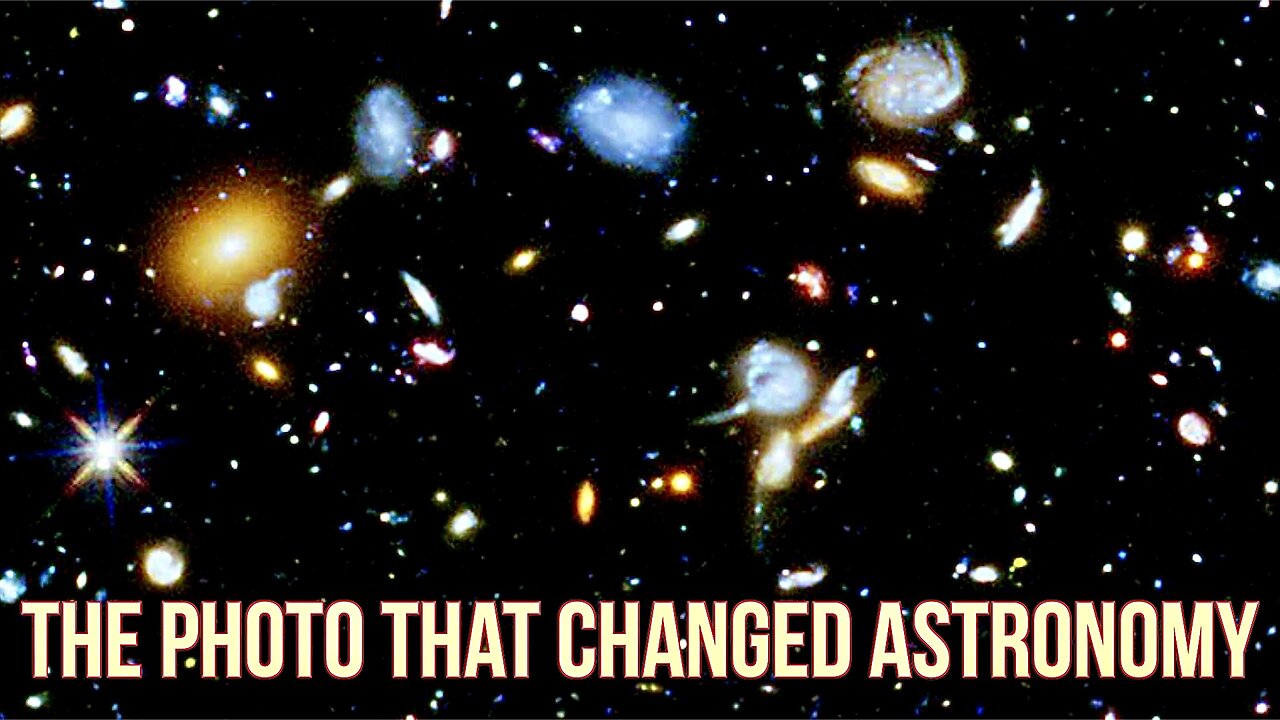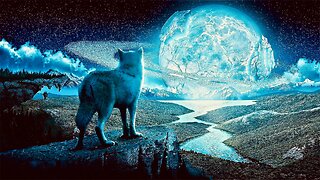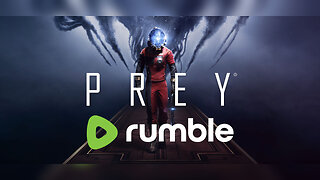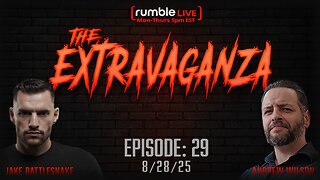Premium Only Content

NASA's Greatest Photo - "Hubble Deep Field" - Billions & Billions of Galaxies Are Out There
If you hold a pin at arm’s length up in the air, the head of the pin covers approximately the amount of sky that appears in the Hubble Deep Field. The iconic 1995 image is crowded, not because it’s a broad swath of sky but because it’s a broad swath of time. The Hubble Deep Field is more than 12 billion light-years deep. Telescopes are time machines. When we look out at space, we are looking back in time. The light arriving at our location from the farthest objects in the universe is light that left those objects billions of years ago. We see those objects not as they are today, but as they appeared long ago.
For 10 straight days in 1995, Hubble stared at a tiny and nearly empty patch of sky near the Big Dipper. The telescope gathered all the light it could, slowly building a picture. What emerged — the Hubble Deep Field — revealed galaxies fainter than had ever been seen before. The light from some of these has traveled for 10 billion years to reach us.
It showed us a sliver of the early universe, from long before our sun was born. This is really a three-dimensional picture, a cosmic core sample. The results are a treasure trove: 3,000 galaxies, large and small, shapely and amorphous, burning in the depths of space. There are a few foreground stars, many remote galaxies and more galaxies in between. The galaxies vary in shape, size and color. We can see how they changed through time. With the Hubble Deep Field, we reach back nearly to the time when galaxies emerged from the chaos of the big bang.
This image, called the Hubble Ultra Deep Field, shows 28 of the more than 500 young galaxies that existed when the universe was less than 1 billion years old.
In subsequent years, Hubble teamed with other observatories to examine small patches of the sky in high resolution with long exposures and multiple wavelengths. Surveys like the Hubble Ultra Deep Field (HUDF), and the Cosmic Assembly Near-infrared Deep Extragalactic Legacy Survey (CANDELS) have provided pictures of vast, deep collections of galaxies — including some that existed when the universe was less than a billion years old.
In 2014, astronomers released the most colorful and comprehensive picture of the evolving universe ever captured by Hubble. The observation, called the Ultraviolet Coverage of the Hubble Ultra Deep Field, provides the missing link in star formation. Astronomers previously studied the Hubble Ultra Deep Field (HUDF) in visible and near-infrared light in a series of images captured from 2003 to 2009.
Now, using ultraviolet light, astronomers combined the full range of colors available to Hubble, stretching all the way from ultraviolet to near-infrared light. Ultraviolet light comes from the hottest, largest and youngest stars. By observing at these wavelengths, researchers get a direct look at which galaxies are forming stars and where the stars are forming within those galaxies. Studying the ultraviolet images of galaxies in this intermediate time period enables astronomers to understand how galaxies grew in size by forming small collections of very hot stars. Because Earth’s atmosphere filters most ultraviolet light, this work can only be accomplished with a space-based telescope.
The resulting image — made from 841 orbits of telescope viewing time — contains approximately 10,000 galaxies, extending back in time to within a few hundred million years of the big bang. Hubble can see even farther back in time by using gravitational lensing to find more distant galaxies that formed even earlier in the universe, such as in the CLASH survey and Frontier Fields. With its powerful infrared vision, the James Webb Space Telescope can see even farther back in time.
Robert Williams was the director of the Hubble’s science institute back in 1995, and it was his decision to attempt a deep field observation with the telescope. Previous calculations had indicated that Hubble would not be able to detect very distant galaxies, but Williams figured they’d never know unless they tried.
His team chose a completely dark part of the sky, in order to see beyond the stars of the Milky Way, and programmed Hubble to stare at that spot for 10 days. It was unusual to use precious observing time to point the telescope at nothing in particular, but that’s what they did.
“We didn’t know what was there, and that was the whole purpose of the observation, basically — to get a core sample of the universe,” Williams said, borrowing the concept of the “core sample” from the earth sciences. “You do the same thing if you’re trying to understand the geology of the Earth: Pick some typical spot to drill down to try to understand exactly what the various layers of the Earth are and what they mean in terms of its geologic history.”
What makes the Hubble Deep Field an atypical core sample is that rather than observing the material as it is now, the telescope collected images of galaxies as they appeared millions and billions of years ago.
#space #universe #wow
-
 2:53
2:53
Seeker Land
1 month agoHow 14 Wolves Changed The Path Of Rivers in Yellowstone Park - Amazing True Story
48 -
 1:05:09
1:05:09
Donald Trump Jr.
4 hours agoMare Liberum: The Next Chapter in Protecting Our Sovereignty, Interview with Erik Bethel | Triggered Ep.271
38.4K50 -
 LIVE
LIVE
StoneMountain64
5 hours ago#1 WARZONE TACTICIAN + New Battlefield Trailer
373 watching -
 LIVE
LIVE
SavageJayGatsby
23 hours agoFirst Rumble Exclusive Stream?! | Let's Play: Prey | $300 Weekly Goal for Spicy Bite Saturday
83 watching -
 LIVE
LIVE
GritsGG
10 hours agoWin Streaking! Most Wins 3485+ 🧠
103 watching -
 LIVE
LIVE
Quite Frankly
5 hours ago"Mixed News, RFK Pull-up Challenge, Calls" ft. J Gulinello 8/28/25
413 watching -
 1:14:52
1:14:52
TheCrucible
2 hours agoThe Extravaganza! EP: 29 (8/28/25)
69.5K7 -
 1:09:58
1:09:58
Kim Iversen
3 hours agoTrans. Russian. Anti-Israel. Anti-Trump. Are You Buying This Story?
18.1K46 -
 1:51:08
1:51:08
Redacted News
3 hours agoEMERGENCY! BILL GATES CULT MEMBERS FOUND PLANTED INSIDE MULTIPLE FEDERAL AGENCIES, RFK FURIOUS
113K79 -
 31:02
31:02
Kimberly Guilfoyle
4 hours agoFull Breaking News Coverage: Live with John Nantz & Steve Moore | Ep250
20.4K12